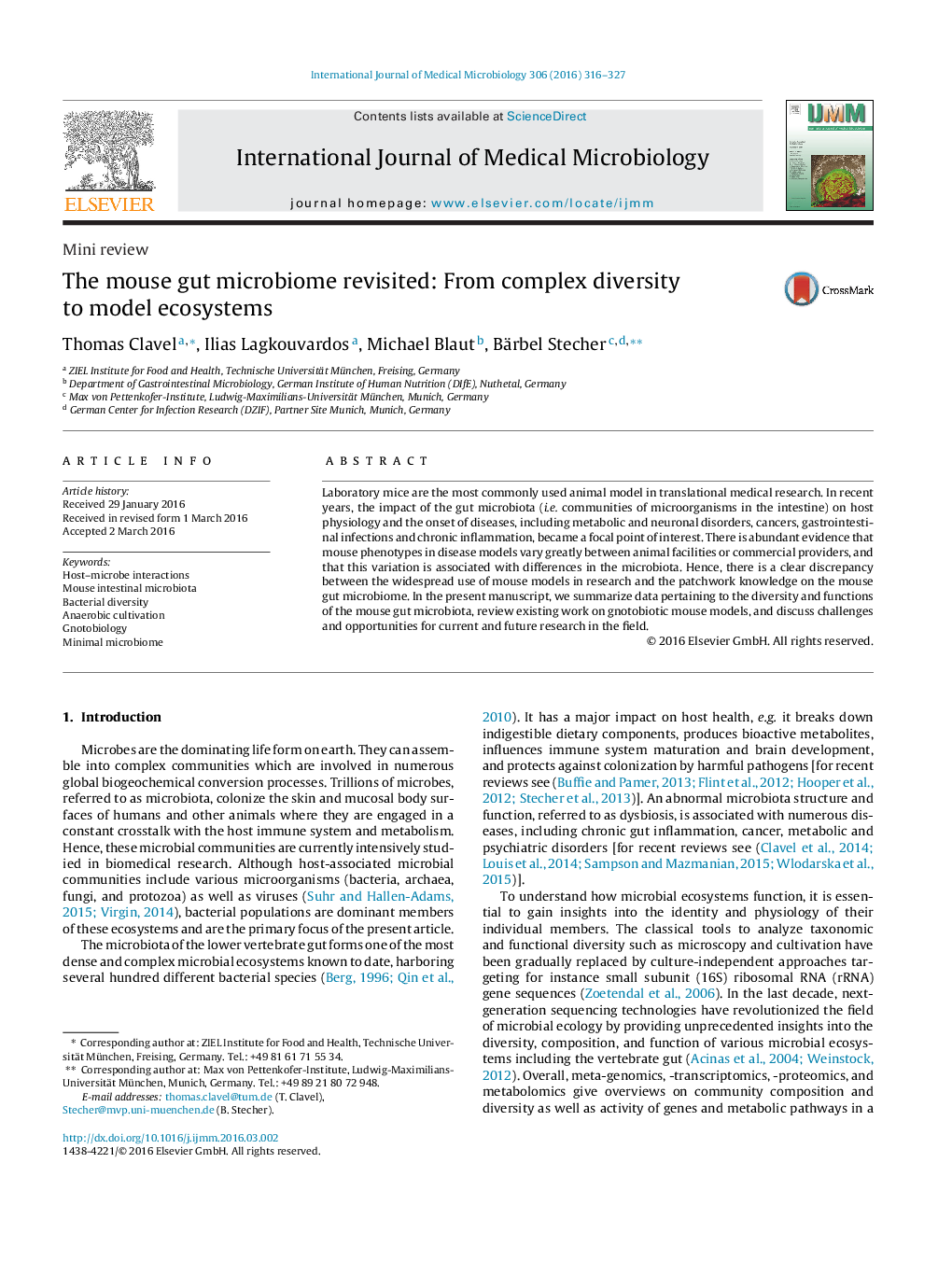| Article ID | Journal | Published Year | Pages | File Type |
|---|---|---|---|---|
| 5517830 | International Journal of Medical Microbiology | 2016 | 12 Pages |
Laboratory mice are the most commonly used animal model in translational medical research. In recent years, the impact of the gut microbiota (i.e. communities of microorganisms in the intestine) on host physiology and the onset of diseases, including metabolic and neuronal disorders, cancers, gastrointestinal infections and chronic inflammation, became a focal point of interest. There is abundant evidence that mouse phenotypes in disease models vary greatly between animal facilities or commercial providers, and that this variation is associated with differences in the microbiota. Hence, there is a clear discrepancy between the widespread use of mouse models in research and the patchwork knowledge on the mouse gut microbiome. In the present manuscript, we summarize data pertaining to the diversity and functions of the mouse gut microbiota, review existing work on gnotobiotic mouse models, and discuss challenges and opportunities for current and future research in the field.
